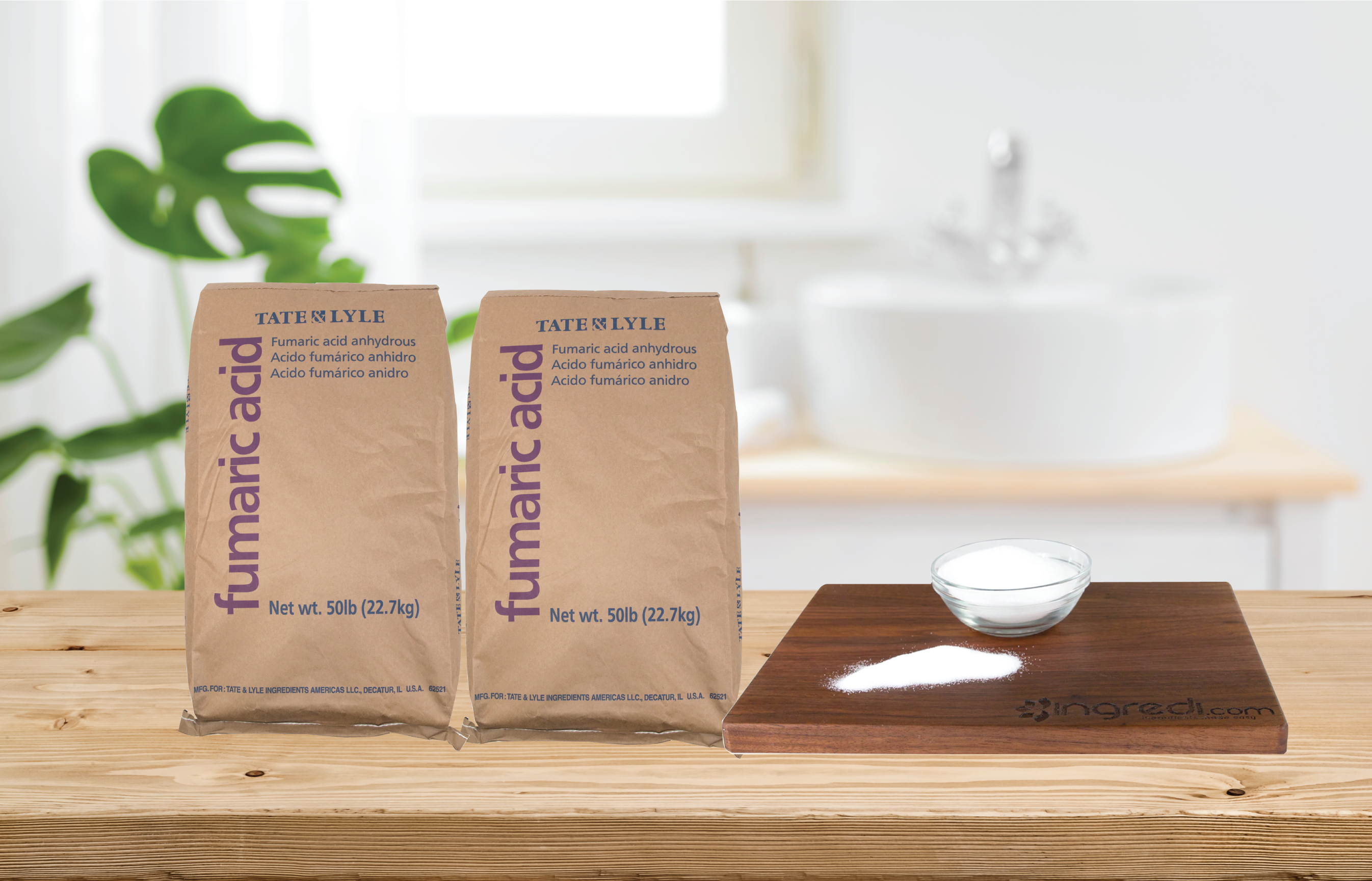What Is Fumaric Acid and How Can It Be Used?
By on Feb 3rd 2021

Fumaric acid is an acid that is naturally occurring in bolete mushrooms and Iceland moss and plays an important role as an intermediate in the citric acid cycle (or the Krebs cycle). This cycle is very important and helps produce energy from carbs, fats, and proteins in humans. Let us explore some of the uses of fumaric acid.
How is Fumaric Acid Produced?
Ok, so fumaric acid is naturally occurring but how do we get it? To produce fumaric acid there are two main methods that are usually done. The original method that was done was using bacteria to produce fumaric acid. This was later discontinued and replaced with petrochemical production and sugar fermentation which is how it is produced today.
Petrochemical production basically means that hydrocarbons are used to synthesis the same chemical. Using sugar fermentation fumaric acid is synthesized from furfural (an organic compound from processed corn) plus chlorate in the presence of a vanadium-based catalyst. The reason for this switch from natural production to chemical synthesis was simply due to the cost-effectiveness of the petrochemical production method. Fumaric acid is also an important precursor for some other acids like L-malic acid and L-aspartic acid.
Food Additive

Fumaric acid is commonly used as a food additive to add flavor, as a coagulant, as a food preservative, and as an acid in leavening. It is one of the strongest organic acids commonly used in food, so it is important to know a bit about it.
It is used for many reasons one being the ingredients fruity like flavor. It is used as an effective anti-microbial agent because it can disrupt microbial activity by interacting with the microbial’s cell wall. Fumaric acid is commonly added to different foods or beverages to regulate acidity and pH as it is an acidulant. These qualities allow fumaric acid to be used as a preservative.
For these reasons it is added to fresh beef to extend the shelf life or to other products in the bakery. It has even been added to beverages like fruit juice, beer, hard cider, and other spirits. Fumaric acid is in everything from processed veggies to tortillas. Because of fumaric acid’s sour flavor it is commonly used in chewing gum and as a sweetener.
Fumaric acid is also about 1.5 times more acidic than citric acid. This is important because it means you could add less and get more of this type of product depending on the use. It is also occasionally used as a substitute for tartaric acid and citric acid. In our article about malic acid, we talked about how malic acid was used in salt in vinegar chips. Fumaric acid is also used alongside malic acid to help create that distinct flavor.
Skin Benefits
Fumaric acid is not just found in plants though, when exposed to natural light, skin naturally makes fumaric acid, and that is the reason that it was originally used. It was used to treat an autoimmune condition called psoriasis. This condition is thought to be a genetic disease that is caused by environmental factors and has symptoms of itchy and red skin.
Is Fumaric Acid Safe?

It is considered practically non-toxic but as the saying goes, everything in moderation, as large doses could be potentially deleterious or lead to side effects. Therefore, fumaric acid and its derivatives are approved for consumption by the FDA.
Need fumaric acid for your business? Check out Ingredi.com, where ingredients are made easy! Link below:
Fumaric Acid FCC, Fine Granular | 50 lbs Bag
Sources:
https://foodadditives.net/acidulents/fumaric-acid/#Natural-Sources
https://pubchem.ncbi.nlm.nih.gov/compound/Fumaric-acid
https://www.sciencedirect.com/topics/agricultural-and-biological-sciences/fumaric-acid
https://www.ncbi.nlm.nih.gov/pmc/articles/PMC5023231/
https://www.ncbi.nlm.nih.gov/pmc/articles/PMC2243254/#:~:text=Fumaric%20acid%20is%20currently%20produced,hydrocarbons%20in%20the%20gas%20phase.&text=The%20butane%20oxidation%20reaction%20equation,O3%20%2B%204H2O.
https://thechemco.com/chemical/fumaric-acid/
https://www.seriouseats.com/2012/09/the-best-salt-and-vinegar-chips-tasting-brands-most-acidic.html
https://ec.europa.eu/info/departments/health-and-food-safety_en
https://thechemco.com/chemical/fumaric-acid/
https://sciencing.com/fumaric-acid-7266869.html
https://www.ncbi.nlm.nih.gov/pmc/articles/PMC2243254/
https://www.accessdata.fda.gov/scripts/cdrh/cfdocs/cfcfr/CFRSearch.cfm?fr=172.350
https://www.brenntag.com/en-us/products/fumaric-acid/
https://www.cochrane.org/CD010497/SKIN_oral-fumaric-acid-esters-treatment-psoriasis






